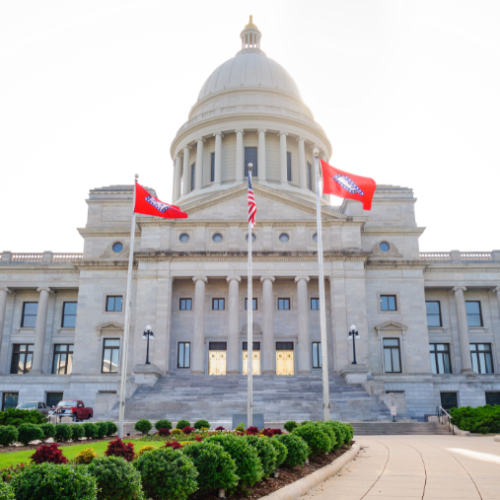Montana Governor Signs Bills to Increase Public Safety While Curbing Prison and Jail Population Growth
In the spring of 2017, Montana Governor Steve Bullock signed a series of bills that were developed as part of a justice reinvestment approach and are expected to significantly improve the state’s criminal justice system.
What Does This Mean for Montana?
- Prison space will be reserved for people who pose the greatest risk to public safety. People who commit low-level supervision violations, such as failing a drug test, will receive shorter periods of incarceration in prison instead of being revoked to prison for many months. Additionally, converting the part-time volunteer parole board into a full-time, professional board and instituting structured parole guidelines will enable the board to make more informed, consistent, and efficient decisions so that people will be eligible for release from prison when their sentence first allows.
- Jail overcrowding will be alleviated. State-funded grant programs will allow counties to develop pretrial service programs and create or expand deferred prosecution programs to help divert people from jails when appropriate. A cumbersome pre-sentence investigation process will be streamlined and expedited to help reduce lengthy jail stays for people awaiting sentencing.
- The state will avert $69 million in spending. This money, which would have been spent on contract beds, can now be put to better use in the state’s general fund as Montana’s prison population declines over the next six years.
- Communities will be safer. Local grant programs will provide more housing opportunities for people leaving prison and jail, ensuring that they are more stable and therefore less likely to recidivate. Certifying behavioral health peer support specialists will increase behavioral health care providers’ capacity to offer critical support to people with mental illnesses and substance use disorders.
Why is This Legislation Needed?
Montana’s prisons and jails are now full. Without action, the state’s prison population was projected to increase by 14 percent by 2023, and the supervision population was projected to increase 15 percent by the same year. This growth would have required spending more than $50 million on additional contract beds and up to hundreds of millions of dollars to construct and operate new prison facilities. Total spending on corrections has gone up by 16 percent since 2008 and now tops $180 million annually.
How Was the Legislation Developed?
The bipartisan 15-member Montana Commission on Sentencing met six times between September 2015 and October 2016 as part of a data-driven justice reinvestment approach to address prison overcrowding, high recidivism, and the growing impact of substance use on people in the state’s criminal justice system. This effort was aided by technical assistance from The Council of State Governments (CSG) Justice Center. Ultimately, nine pieces of legislation, sponsored by Commission on Sentencing Chair State Senator Cynthia Wolken and Representative Nate McConnell, passed with bipartisan support in both the Senate and the House and were signed by the governor.
Links to the CSG Justice Center’s final report to the Montana Commission on Sentencing and data analysis presentations that were delivered to the Commission can be found here.
This project was supported by Grant No. 2013-ZB-BX-K002 awarded by the Bureau of Justice Assistance. The Bureau of Justice Assistance is a component of the Department of Justice’s Office of Justice Programs, which also includes the Bureau of Justice Statistics, the National Institute of Justice, the Office of Juvenile Justice and Delinquency Prevention, the Office for Victims of Crime, and the SMART Office. Points of view or opinions in this document are those of the author and do not necessarily represent the official position or policies of the U.S. Department of Justice.
Arkansas policymakers have long expressed concerns about the state’s high recidivism rate. Over the past 10 years, an…
Read MoreIn April 2025, Arkansas Governor Sarah Huckabee Sanders signed a package of bipartisan criminal justice legislation into law,…
Read More Explainer: Key Findings and Options from Arkansas’s Justice Reinvestment Initiative
Explainer: Key Findings and Options from Arkansas’s Justice Reinvestment Initiative
Arkansas policymakers have long expressed concerns about the state’s high recidivism rate.…
Read More Explainer: How a New Law in Arkansas Tackles Crime, Recidivism, and Community Supervision Challenges
Explainer: How a New Law in Arkansas Tackles Crime, Recidivism, and Community Supervision Challenges
In April 2025, Arkansas Governor Sarah Huckabee Sanders signed a package of…
Read More









